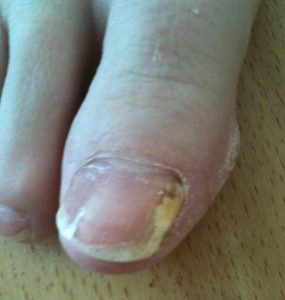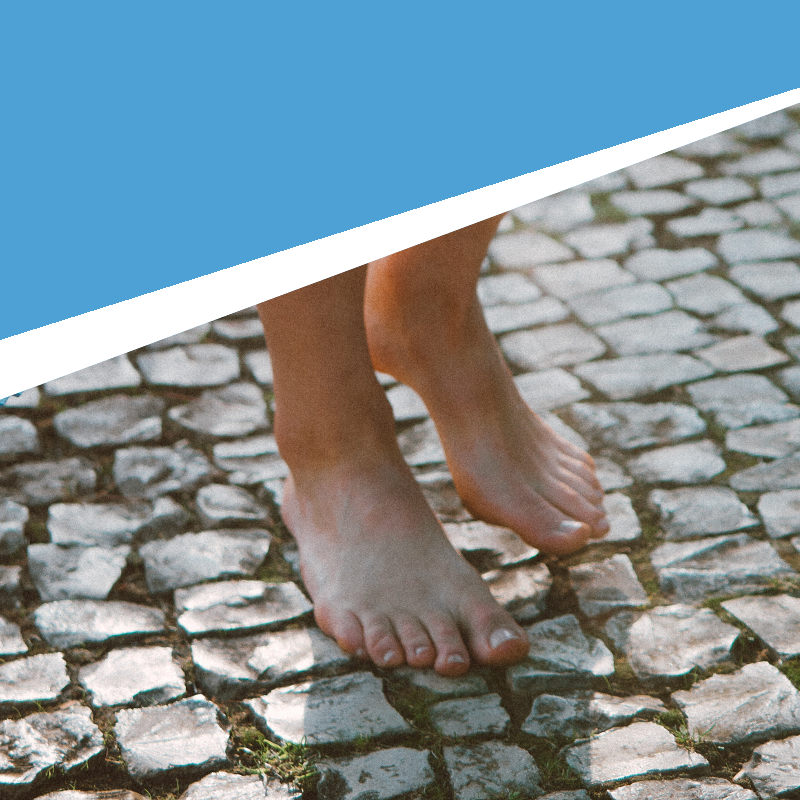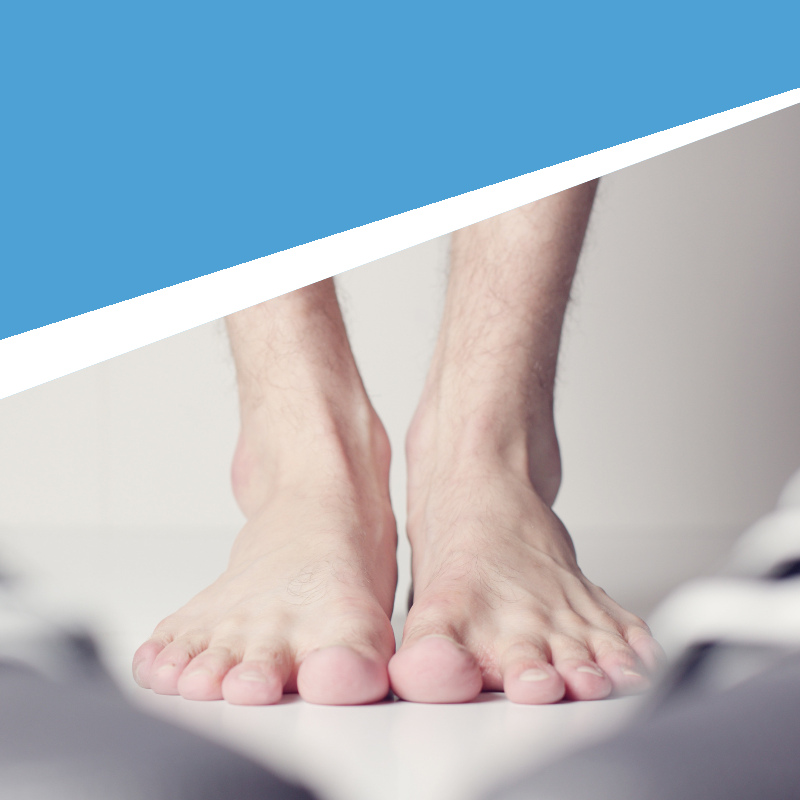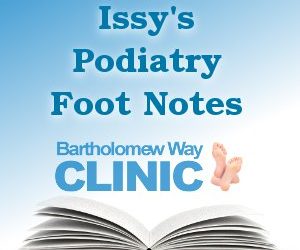A common and cosmetically displeasing condition affecting the toenails. Also known as Dermatophytic Onychomycosis. The infecting organisms are usually from the family of dermatophytes but can also include yeasts and moulds. What are the signs and symptoms? These are not always present in the early stages but may include….

Call us to help you with your toenail problem. (01403) 276272
- Discolouration starting at the free edge of the nail moving down the side towards the cuticle
- A white/yellow/brown crumbly appearance of the nail
- The whole of the nail may be involved
- Thickening of the nail
- Separation of the nail from the nail bed
- Pain under the nail
- Inflammation around the nail
Signs and symptoms of nail discolouration or deformity may not always be clear and should never be ignored. If you are concerned it is best to consult a Podiatrist or Doctor for a proper diagnosis. How did this happen? The most common cause of toenail fungus is cross-infection with Tinea Pedis better known as Athlete’s Foot! A common fungal infection of the skin. Other causes include:
- Keeping feet in a closed, warm, moist environment
- Ill-fitting footwear or hosiery
- Wearing synthetic fibres or nylons in footwear and hosiery
- Occluding nails with nail polish for long periods of time
- Cross infection in communal areas
Fungal organisms are opportunistic, which means they often affect people whose immune defences are running low. Treatments The type of treatment advised very much depends on the organism, the area of nail affected and how severe the infection is. If there are mild to no symptoms and the cosmetic appearance is not causing concern, treatment may not be necessary. For mild to moderate fungal infections or if you are unable to take systemic medication, the recommendation may be to start treatment with an anti-fungal nail lacquer as a home treatment. This works well in conjunction with regular reduction and filing of the affected nails by your Podiatrist throughout the treatment period. If the infection is more severe, the recommended treatment may involve a combination of oral medication, anti-fungal nail lacquer application and nail reduction and filing by your Podiatrist. Fungal infections of the toenails can be a real challenge to treat but not impossible! Working as a team with your Podiatrist will give you a better chance of cure. Prevention is better than cure when it comes to fungal infection of the nails. The following tips will help you keep your nails fungus free:
- Look after your nails keep them short and filed. Use your own nail care equipment
- Treat any fungal infections of your feet as soon as possible to prevent cross infection to your nails
- Let your feet and nails breathe! Wear cotton hosiery and well fitting shoes. Dispose of old contaminated footwear
- Take nail polish off, avoid leaving on your nails for long periods
- Wear protective footwear in communal areas such as swimming pool sides and changing areas
- Keeping your immune system healthy!
- Visit your podiatrist regularly for a foot health check




